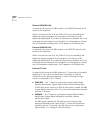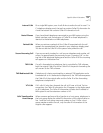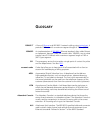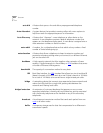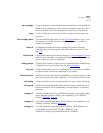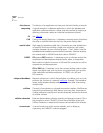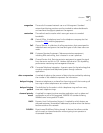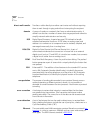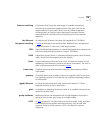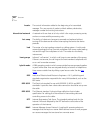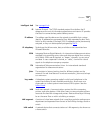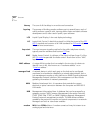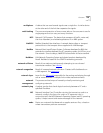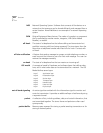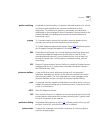
438 GLOSSARY
direct mail transfer Transfers a caller directly to another user’s voice mail without requiring
them to wait through ringing and without interrupting the recipient.
domain A group of nodes on a network that form an administrative entity. A
domain can also be a number of servers that are grouped and named to
simplify network administration and security.
DSP Digital Signal Processor. A special-purpose CPU tailored to handle
complex mathematical functions. A DSP takes an analog signal and
reduces it to numbers so its components can be isolated, sampled, and
rearranged more easily than in analog form.
DSU/CSU Digital (or Data) Service Unit/Channel Service Unit. A pair of
communications devices that connect an in-house line to an external
digital circuit (such as T1 and DDS). It is similar to a modem, but connects
a digital circuit rather than an analog circuit.
DTMF Dual Tone Multi-Frequency. A term for push button dialing. The pushed
button generates a pair of tones which uniquely identify the button that
was pressed.
E911 Enhanced 911. The addition of two features to the standard 911 service:
one is ANI (Automatic Number Identification) to identify the person
associated with the calling telephone, and the other is ALI (Automatic
Location Identification) to identify the physical location of the calling
telephone.
encapsulation The process of sending data encoded in one protocol format across a
network operating a different protocol, where it is not possible or
desirable to convert between the two protocols. Also known as protocol
tunneling.
error correction A technique to restore data integrity in received data that has been
corrupted during transmission. Error correction techniques involve
sending extra data. The correct form of the data can be reconstructed
from the extra information.
error detection A set of techniques that can be used to detect errors in received data.
Parity checking techniques include the use of parity bits, checksums or a
Cyclic Redundancy Check (CRC).
Ethernet The most widely used LAN transmission protocol. Based on a network bus
topology, it runs at a maximum 10Mbit/s and can use a wide variety of
cable types. The IEEE Ethernet standard is IEEE 802.3
.



